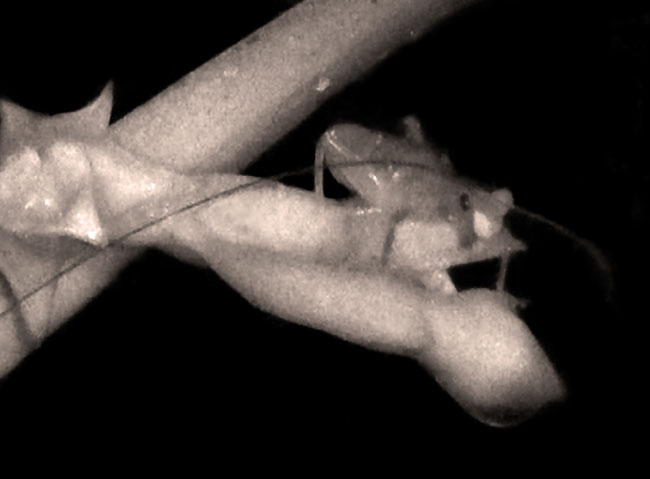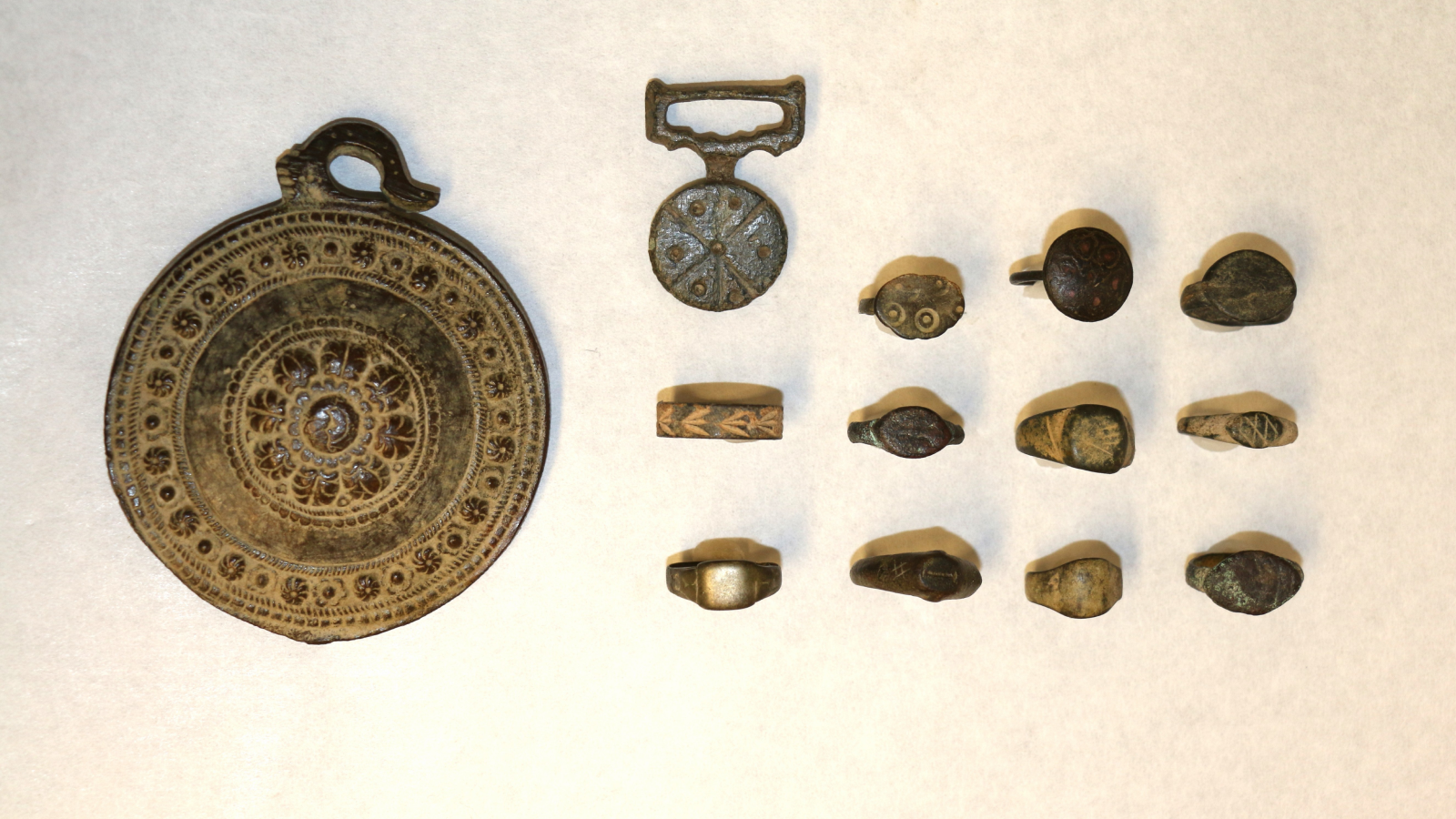A First: Cricket Pollinates Flowers

Motion-sensitive night cameras captured a previously unknown cricket species creeping into an orchid flower and carrying off bits of pollen atop its head on an island in the Indian Ocean. It’s the first known instance of any cricket pollinating a flower.
The newly discovered wingless bug is a raspy cricket in the Glomeremus genus, which was seen in the video pollinating the greenish-white flowers of the orchid Angraecum cadetii on Reunion Island.
The match-up is an odd one: The raspy cricket belongs to the Orthoptera order of insects, which are better known for eating plants, not pollinating them. And the orchid A. cadetii belongs to a genus mainly specialized for moth pollination.
However, “the moths that are the main Angraecum pollinators on Madagascar are not found on Reunion and until we started our research the pollination of this genus on Reunion had always been an open question,” said researcher Claire Micheneau of the Royal Botanic Gardens, Kew.
In addition, there is a close match in size between the raspy cricket’s head and A. cadetii's nectar-spur opening. To reach the flowers, which grow on trees, the crickets climb up the orchid leaves or jump across from neighboring plants. They use very long antennae to explore their surroundings.
Most flowering plants rely on animals or wind to carry the sticky pollen from the stamen, or male flower part, to the top of the female part called a stigma.
“We knew from monitoring pollen content in the flowers that pollination was taking place. However, we did not observe it during the day. That's why we rigged up a night camera and caught this raspy cricket in action,” Micheneau said.
Get the world’s most fascinating discoveries delivered straight to your inbox.
Micheneau and colleague Jacques Fournel describe their findings in the Jan. 12 issue of the journal Annals of Botany.
- Video – Rare Occurrence: Cricket Pollinates Orchid
- Top 10 Poisonous Plants
- Images: Backyard Bugs



